
POLYMER TESTING
Scope & Guideline
Transforming Insights into Polymer Excellence
Introduction
Aims and Scopes
- Material Characterization:
Research published in the journal often emphasizes the thorough characterization of polymers, including their mechanical, thermal, and rheological properties. This involves utilizing advanced techniques and methodologies to assess material performance under different conditions. - Polymer Degradation and Stability:
A significant focus is placed on the degradation behavior of polymers under various environmental conditions, including thermal, mechanical, and chemical stressors. Studies explore the longevity and stability of polymer materials, particularly in applications such as packaging and construction. - Innovative Testing Methods:
The journal highlights novel testing methods and protocols for evaluating polymer properties, such as accelerated aging tests, dynamic mechanical analysis, and non-destructive testing techniques. - Sustainable and Biodegradable Polymers:
There is a growing interest in sustainable materials, with many papers addressing biodegradable polymers and biocomposites designed for eco-friendly applications. This reflects the industry's shift towards sustainability and environmental responsibility. - Advanced Polymer Composites:
The journal covers the development and testing of advanced polymer composites, including those reinforced with nanomaterials or natural fibers. Research in this area focuses on enhancing mechanical properties and functionality for specific applications. - Additive Manufacturing and 3D Printing:
A notable trend in the journal is the exploration of additive manufacturing technologies, particularly in the context of polymer materials. This includes studies on the mechanical properties, microstructural analysis, and optimization of printing parameters.
Trending and Emerging
- Smart and Responsive Polymers:
There is a rising focus on smart materials that respond to environmental stimuli, such as temperature and pH. This includes the development of hydrogels and shape-memory polymers that have applications in biomedical and wearable technologies. - Nanocomposites and Advanced Materials:
Research on nanocomposites, particularly those incorporating graphene, carbon nanotubes, and other nanomaterials, is increasingly prevalent. These studies explore enhancements in mechanical, thermal, and electrical properties, leading to innovative applications. - Polymer Recycling and Sustainability:
A significant trend is the exploration of polymer recycling methods and the development of sustainable materials. Research in this area addresses the lifecycle of polymers, focusing on reducing environmental impact and enhancing recyclability. - Additive Manufacturing Innovations:
The journal is seeing a surge in papers related to 3D printing technologies, specifically in optimizing printing processes and characterizing the mechanical properties of 3D-printed polymers. This reflects the growing integration of additive manufacturing in polymer applications. - Biodegradable and Bio-based Polymers:
There is an increasing emphasis on biodegradable and bio-based polymers, driven by the need for sustainable materials in various applications. Research is focused on enhancing the properties and functionalities of these materials.
Declining or Waning
- Traditional Polymer Testing Techniques:
There has been a noticeable decrease in research focusing on conventional polymer testing methods, such as basic tensile and compression tests, as the field evolves towards more sophisticated and multi-faceted evaluation techniques. - Generalized Reviews on Polymer Properties:
Papers that provide broad, non-specific reviews of polymer properties without novel insights or methodologies are becoming less frequent, as the journal shifts towards more targeted research that offers specific advancements or applications. - Static Mechanical Properties:
Research solely focused on static mechanical properties without consideration of dynamic or environmental factors is declining, as the field increasingly recognizes the importance of understanding material behavior under real-world conditions. - Conventional Thermoplastics:
Research dedicated to traditional thermoplastics is waning, with a growing emphasis on innovative and complex materials, such as composites, bio-based polymers, and smart materials.
Similar Journals
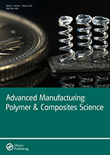
Advanced Manufacturing-Polymer & Composites Science
Empowering Knowledge in Polymer Science and EngineeringAdvanced Manufacturing-Polymer & Composites Science, published by Taylor & Francis Ltd, is a prominent open-access journal dedicated to the cutting-edge fields of polymer and composite materials in advanced manufacturing. With an ISSN of 2055-0340 and an E-ISSN of 2055-0359, this journal has been providing researchers, professionals, and students critical insights since its inception in 2015. The journal is characterized by its pivotal role in disseminating high-quality research that intersects with crucial areas such as Electrical and Electronic Engineering, Management of Technology and Innovation, and Polymers and Plastics, as indicated by its Q3 and Q2 rankings across these categories in 2023. In addition, it has established a significant presence in Scopus rankings, reflecting its contribution to the academic community with specific ranks in the top half of its fields. Recognizing the importance of open access, the journal fosters wider dissemination of knowledge, allowing global access to groundbreaking studies that influence both research and practical applications. Operating from the United Kingdom, Advanced Manufacturing-Polymer & Composites Science continues to pave the way for innovation and collaboration in the field, making it an essential resource for anyone involved in materials science and engineering.
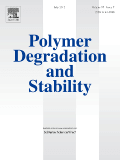
POLYMER DEGRADATION AND STABILITY
Elevating Research on Polymer LifecyclesPOLYMER DEGRADATION AND STABILITY is a prestigious peer-reviewed journal published by Elsevier Sci Ltd, focusing on the critical aspects of polymer degradation and stability, which are essential for advancing the field of materials science. With an impressive impact factor and categorized in the top tier (Q1) across several disciplines including Condensed Matter Physics, Materials Chemistry, Mechanics of Materials, and Polymers and Plastics, this journal serves as a vital platform for researchers and professionals dedicated to uncovering the intricacies of polymer behavior under various environmental conditions. Established in 1979 and converging until 2024, it contributes significantly to the scientific dialogue surrounding polymer lifecycle and durability, essential for innovations in engineering and technology. Although it is not an open-access journal, POLYMER DEGRADATION AND STABILITY ensures access to cutting-edge research, providing invaluable insights and fostering academic collaboration for students, researchers, and industry practitioners alike.

International Journal of Polymer Science
Advancing the Boundaries of Polymer ResearchInternational Journal of Polymer Science is a prominent and peer-reviewed journal dedicated to advancing the field of polymer science. Published by Hindawi Ltd, this open-access journal has been making significant contributions to the discipline since its inception in 2009, ensuring that research findings are accessible to a global audience. With an impressive impact factor and positioned in the Q2 quartile for Polymers and Plastics as of 2023, it ranks 46th out of 161 in the Scopus database, reflecting its strong standing in the research community. The journal welcomes innovative research across various topics within polymer science, including synthesis, characterization, and applications in diverse industries. By providing a platform for scholars, professionals, and students, the International Journal of Polymer Science not only encourages the dissemination of knowledge but also fosters collaboration and innovation in this essential field. Based in Egypt and operating under a rigorous selection process, it remains a vital resource for anyone involved in polymer research.

JOURNAL OF POLYMER ENGINEERING
Driving Technological Breakthroughs in Polymers.JOURNAL OF POLYMER ENGINEERING, published by Walter de Gruyter GmbH, stands as a pivotal platform in the field of polymer science and engineering. With an ISSN of 0334-6447 and an E-ISSN of 2191-0340, this journal has been a vital contributor to the academic landscape since its inception, spanning publications from 1981 to 2024. As a recognized entity in the realms of Chemical Engineering, Materials Chemistry, and Polymers and Plastics, it holds a respectable position in Q3 quartile rankings according to the latest assessments. The journal is positioned to promote the exchange of cutting-edge research findings, technological advancements, and critical reviews that address the complexities of polymer application and innovation. Researchers and professionals will find a wealth of information, from experimental methodologies to theoretical analyses, all designed to inspire and elevate the current understanding of polymer engineering. By fostering collaboration and dissemination of knowledge, the JOURNAL OF POLYMER ENGINEERING remains crucial for advancing research and education in its specialized domains.
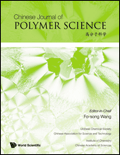
CHINESE JOURNAL OF POLYMER SCIENCE
Transforming Ideas into Polymer InnovationsThe CHINESE JOURNAL OF POLYMER SCIENCE, published by SPRINGER, stands as a premier periodical in the realm of polymer science, showcasing cutting-edge research and technological advancements since its inception in 1985. With an impressive impact factor reflecting its significance in the field, this journal is categorized in the top quartiles (Q1) of Chemical Engineering, Organic Chemistry, and Polymers and Plastics. It features a wide spectrum of innovative studies, thus serving as an essential resource for researchers, professionals, and students dedicated to understanding and advancing polymer-related technologies. The journal is indexed in Scopus, with notable rankings that highlight its influence in the disciplines of organic chemistry and materials science, making it a vital communication platform for authors around the globe aiming to disseminate impactful findings. Although not an open-access publication, the journal ensures robust accessibility through institutional subscriptions and partnerships, further emphasizing its commitment to the advancement of polymer science.

Express Polymer Letters
Catalyzing Collaboration in Material ChemistryExpress Polymer Letters is a leading open-access journal published by BUDAPEST UNIVERSITY OF TECHNOLOGY AND ECONOMICS, focusing on the fast-paced realm of polymer science and engineering. With a broad scope that encompasses the interdisciplinary fields of Chemical Engineering, Materials Chemistry, and Organic Chemistry, the journal serves as a crucial platform for researchers and professionals dedicated to advancing knowledge and innovation in polymer-related disciplines. Since its inception in 2007, it has consistently provided high-quality, peer-reviewed research and has achieved a respectable impact within various categories, evidenced by its Q2 quartile rankings across multiple Scopus categories and its competitive standings in the field. The journal's dedication to open access ensures that research is widely disseminated, promoting transparency and collaboration within the academic community. Positioned to converge into the future, Express Polymer Letters remains an essential resource for cutting-edge studies and developments, with an anticipated convergence period extending through 2024.
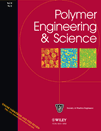
POLYMER ENGINEERING AND SCIENCE
Elevating Polymer Science to New HeightsPOLYMER ENGINEERING AND SCIENCE, published by WILEY, is a premier journal specializing in the field of polymer science and engineering. Since its inception in 1961, this journal has been at the forefront of disseminating high-quality research, focusing on various aspects of polymers and plastics, including their chemistry, properties, and applications. With an impressive impact factor, it ranks in the second quartile (Q2) across multiple categories, including Chemistry (Miscellaneous), Materials Chemistry, and Polymers and Plastics, showcasing the journal's significance and influence in these vital areas of research. Researchers and professionals in academia and industry will find the latest advancements and innovative methodologies in polymer science, making this journal an essential resource for those looking to stay updated on cutting-edge developments. While it does not currently support Open Access, its comprehensive scope and critical insights positioned it as a valuable platform for advancing knowledge and fostering collaboration within the polymer community. The journal’s office is located at 111 River St, Hoboken 07030-5774, NJ, United States, emphasizing its strong presence in the academic landscape.
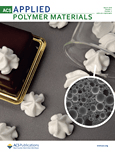
ACS Applied Polymer Materials
Advancing the Future of Polymer ScienceACS Applied Polymer Materials is a prestigious journal published by the American Chemical Society, specifically tailored for the dynamic fields of Organic Chemistry, Polymers and Plastics, and Process Chemistry and Technology. With its ISSN 2637-6105, the journal has rapidly established itself within the academic community, achieving a distinguished Q1 quartile ranking across multiple categories in 2023. This places it among the top-tier journals globally, reinforcing its critical role in disseminating groundbreaking research and innovation in polymer science. The journal is known for its rigorous peer-review process and publishes high-quality articles that are pivotal for researchers, professionals, and students eager to advance knowledge in polymer materials and their applications. Positioned to cover converging themes from 2019 through 2024, ACS Applied Polymer Materials embraces a wide scope of studies, from fundamental chemistry to practical engineering applications, thereby fostering significant advancements in material science. While it offers traditional access options, the journal's impact is reflected in its impressive rankings within Scopus, indicating its relevance and influence in the chemical engineering domain. Join the global community of innovators and discover the latest insights that continue to shape the landscape of applied polymer research.

PROGRESS IN POLYMER SCIENCE
Delivering Cutting-edge Insights for Polymer ProfessionalsPROGRESS IN POLYMER SCIENCE is a prestigious academic journal published by PERGAMON-ELSEVIER SCIENCE LTD, dedicated to advancing the field of polymer science. With an ISSN of 0079-6700 and an E-ISSN of 1873-1619, this journal has established itself as a leading source of high-quality research since its inception in 1967. It ranks in the top quartile (Q1) across multiple categories including Ceramics and Composites, Materials Chemistry, Organic Chemistry, Polymers and Plastics, and Surfaces and Interfaces, reflecting its strong reputation and impact within the scientific community. The journal features rigorous peer-reviewed articles that not only contribute to theoretical advancements but also emphasize practical applications of polymer science in various industries. Although it is not an open-access journal, it remains accessible through institutional subscriptions and provides invaluable insights and data for researchers, professionals, and students alike. PROGRESS IN POLYMER SCIENCE is essential reading for anyone looking to stay abreast of the latest developments and innovations in this dynamic field.

POLYMER SCIENCE SERIES B
Transforming Research into Practical ApplicationsPOLYMER SCIENCE SERIES B is a distinguished journal published by MAIK NAUKA/INTERPERIODICA/SPRINGER, dedicated to advancing knowledge in the fields of ceramics and composites, materials chemistry, and polymers and plastics. The journal, identifiable by its ISSN 1560-0904 and E-ISSN 1555-6123, spans a significant timeline from 1996 to 2024, reflecting its commitment to preserving and disseminating cutting-edge research in polymer science. With its current ranking in the Q3 category across relevant fields, it supports scholars and professionals in enhancing their understanding and application of polymeric materials. While it operates on a non-open access basis, the journal is pivotal for researchers seeking in-depth analysis and peer-reviewed studies. Located in the heart of the United States at 233 Spring St, New York, NY 10013-1578, POLYMER SCIENCE SERIES B serves as an essential resource for committed researchers, professionals, and students aiming to push the boundaries of polymer science.